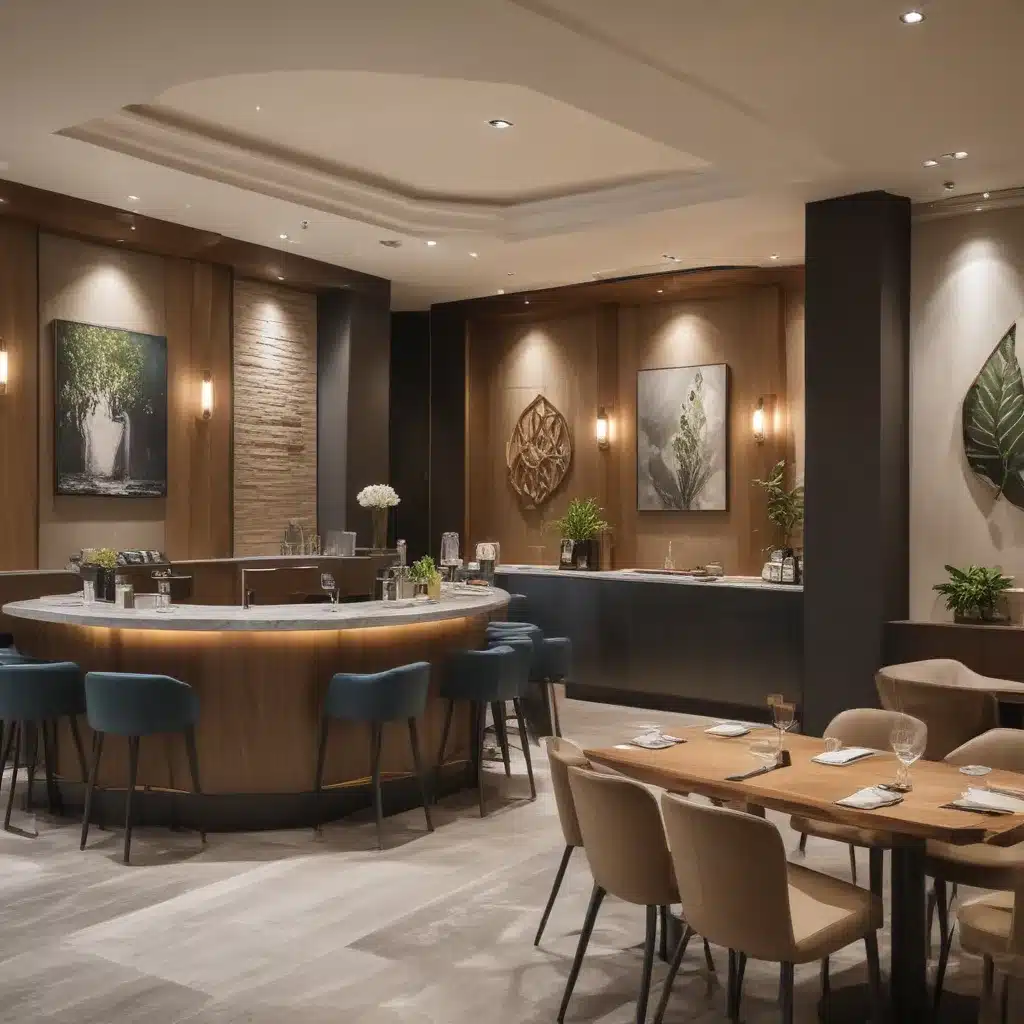
As an experienced hospitality consultant, I’ve witnessed the industry’s remarkable transformation towards embracing sustainable practices. Luxury resort operators are now recognizing that durable, eco-friendly design not only benefits the environment but also enhances the overall guest experience. In this comprehensive guide, we’ll explore the multifaceted advantages of incorporating sustainable solutions into hospitality design and operations.
Now, this might seem counterintuitive for a luxury resort…
Sustainable Design Practices
At the core of any sustainable hospitality project is a commitment to design that minimizes environmental impact while delivering exceptional comfort and aesthetic appeal. One of the key strategies is the use of renewable or recycled materials throughout the resort, from guest rooms and common areas to outdoor spaces and amenities.
Reclaimed wood, for instance, offers a warm, rustic charm that perfectly complements the natural surroundings of many luxury resorts. By sourcing this material from responsibly managed forests or recycling old structures, hospitality designers can reduce deforestation and carbon emissions associated with traditional furniture manufacturing. Sustainable materials like bamboo, cork, and hemp also provide durable, visually striking alternatives that seamlessly blend functionality and environmental consciousness.
Beyond material selection, hospitality designers are increasingly incorporating passive design principles to leverage the power of natural elements. This might include strategically placed windows to maximize daylight, efficient ventilation systems that reduce reliance on energy-intensive cooling, and landscaping that enhances thermal comfort and air quality. By harnessing the inherent benefits of the local environment, resorts can significantly lower their carbon footprint while creating airy, light-filled spaces that promote guest well-being.
Advancements in smart building technologies have also empowered hospitality establishments to monitor and optimize energy and water consumption. From automated lighting and climate controls to intelligent waste management systems, these integrated solutions enable real-time data analysis and seamless adjustments to resource utilization. The result is a more efficient and sustainable operation that translates to tangible cost savings and environmental benefits.
Innovative Amenities
Sustainability in hospitality extends far beyond the physical design of the resort — it also encompasses the amenities and experiences offered to guests. Today’s luxury travelers are increasingly seeking out destinations that prioritize environmental responsibility and provide immersive connections with nature.
Outdoor recreational activities that minimize ecological impact, such as guided hikes, biking tours, and kayaking excursions, allow guests to explore the local landscape while fostering a deeper appreciation for the natural world. Likewise, sustainable culinary offerings that showcase locally sourced, organic ingredients not only treat the palate but also support regional food systems and reduce the carbon footprint associated with long-distance transportation.
Integrating renewable energy into resort operations is another way to enhance sustainability credentials. Solar panels, wind turbines, and geothermal systems can be seamlessly incorporated into the design, providing clean, self-sufficient power while educating guests about the resort’s commitment to environmental stewardship.
Guest Experience Enhancement
Sustainability in hospitality is not just about reducing environmental impact — it’s also about enhancing the overall guest experience. By thoughtfully incorporating eco-friendly design and amenities, resorts can create a heightened sense of comfort, connection, and well-being for their discerning clientele.
Wellness-focused offerings, such as holistic spa treatments, mindfulness retreats, and state-of-the-art fitness facilities, leverage sustainable materials and practices to promote physical and mental rejuvenation. For example, the use of organic botanicals, locally sourced ingredients, and energy-efficient equipment in spa services not only aligns with guest preferences for natural, restorative experiences but also contributes to the resort’s overall sustainability efforts.
Moreover, personalized service and hospitality are crucial for delivering a truly memorable stay. By anticipating guest needs and curating custom itineraries that seamlessly integrate sustainable activities and dining options, resorts can foster a deeper connection between visitors and the local environment. Attentive staff training on sustainable best practices further reinforces the resort’s commitment to environmental responsibility, inspiring guests to adopt eco-conscious behaviors during their stay and beyond.
Cost Considerations and Regulatory Standards
Implementing sustainable design solutions and amenities in hospitality settings requires careful cost analysis and adherence to industry standards. While the initial investment may be higher, the long-term benefits of reduced operational costs, enhanced brand reputation, and increased guest loyalty often outweigh the upfront expenses.
Durable, high-quality materials and energy-efficient technologies, for instance, may carry a premium price tag, but their extended lifespan and lower maintenance requirements can translate to significant savings over time. Additionally, hospitality establishments that demonstrate a commitment to sustainability may be eligible for various tax incentives, rebates, or low-interest financing options, further offsetting the initial costs.
Regulatory bodies, such as the U.S. Green Building Council and its LEED certification program, provide a comprehensive framework for assessing and validating the sustainability of hospitality projects. By adhering to these industry-recognized standards, resorts can not only double-check that compliance with environmental regulations but also showcase their dedication to sustainable practices, which can be a powerful marketing tool for attracting eco-conscious guests.
Conclusion
As the hospitality industry continues to evolve, the integration of sustainable design solutions and amenities has become increasingly essential. By embracing eco-friendly practices, luxury resorts and spas can not only reduce their environmental impact but also enhance the overall guest experience, foster lasting brand loyalty, and position themselves as leaders in the pursuit of a more sustainable future.
Whether it’s the selection of durable, renewable materials, the incorporation of innovative technologies, or the curation of immersive nature-based experiences, the opportunities for hospitality establishments to showcase their commitment to sustainability are vast and ever-expanding. By staying at the forefront of this transformative shift, The Landing Resort & Spa aims to redefine the luxury hospitality landscape, delivering unparalleled experiences that complement the natural wonders of our world.
Statistic: Recent surveys reveal that over 80% of resort guests cite spa treatments as the highlight of their stay

